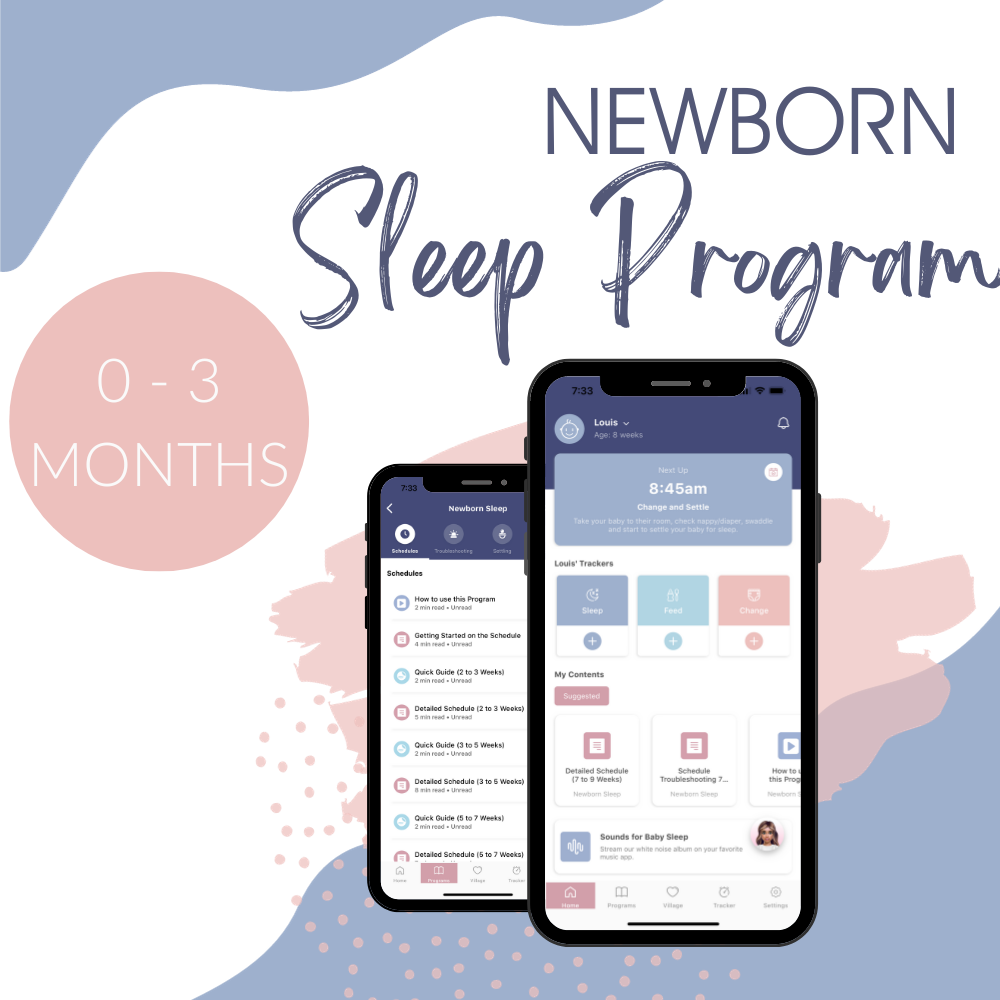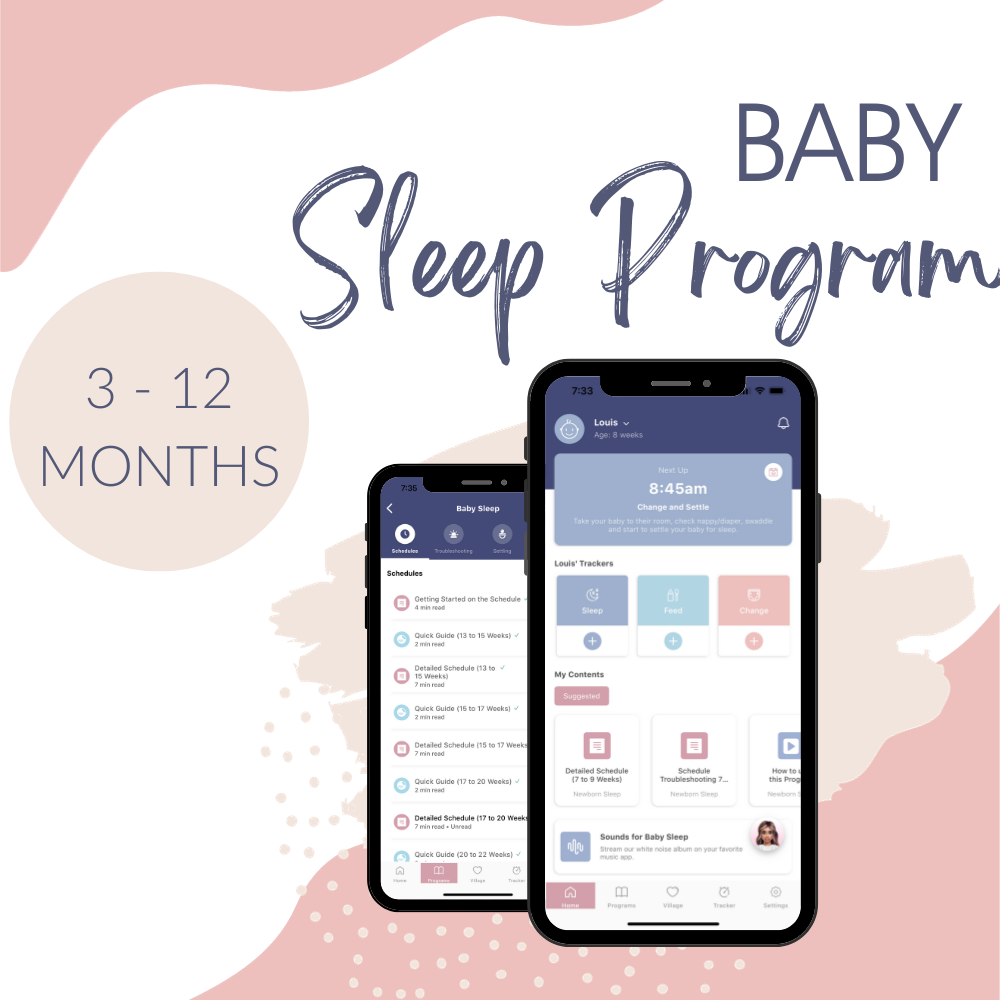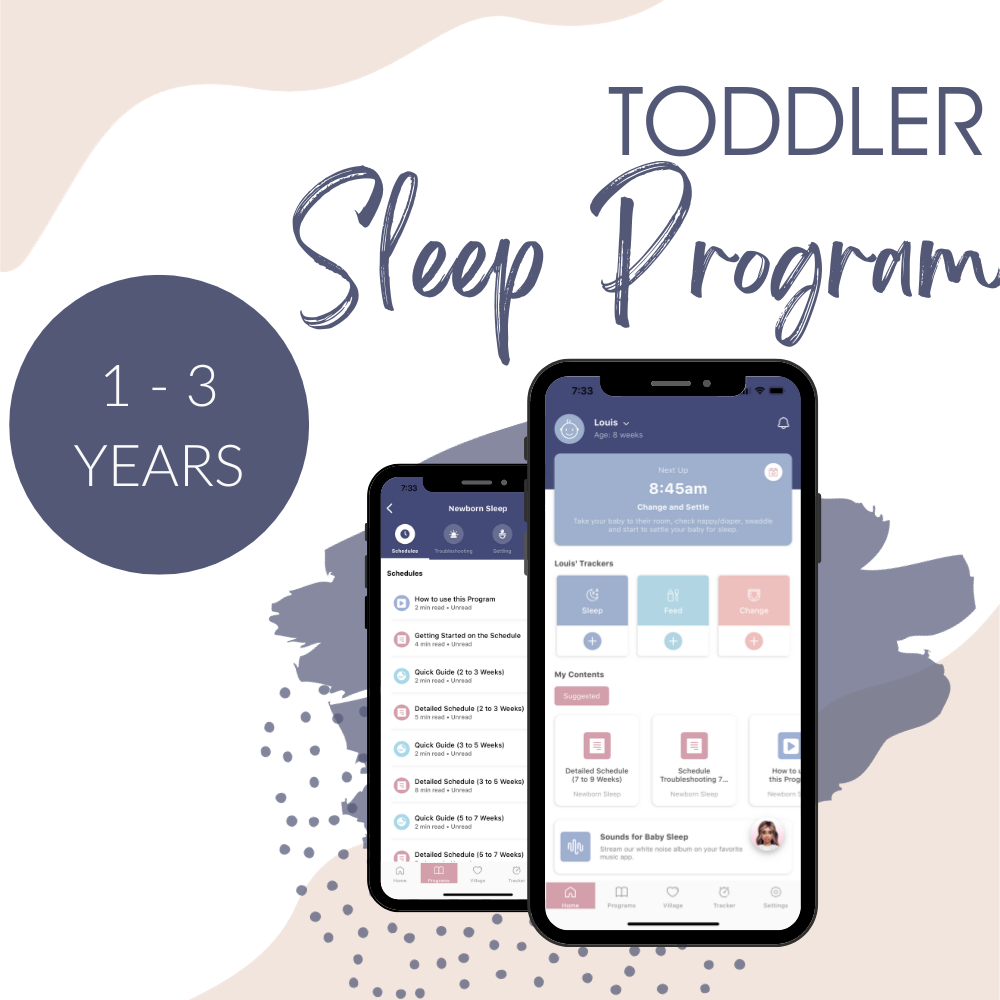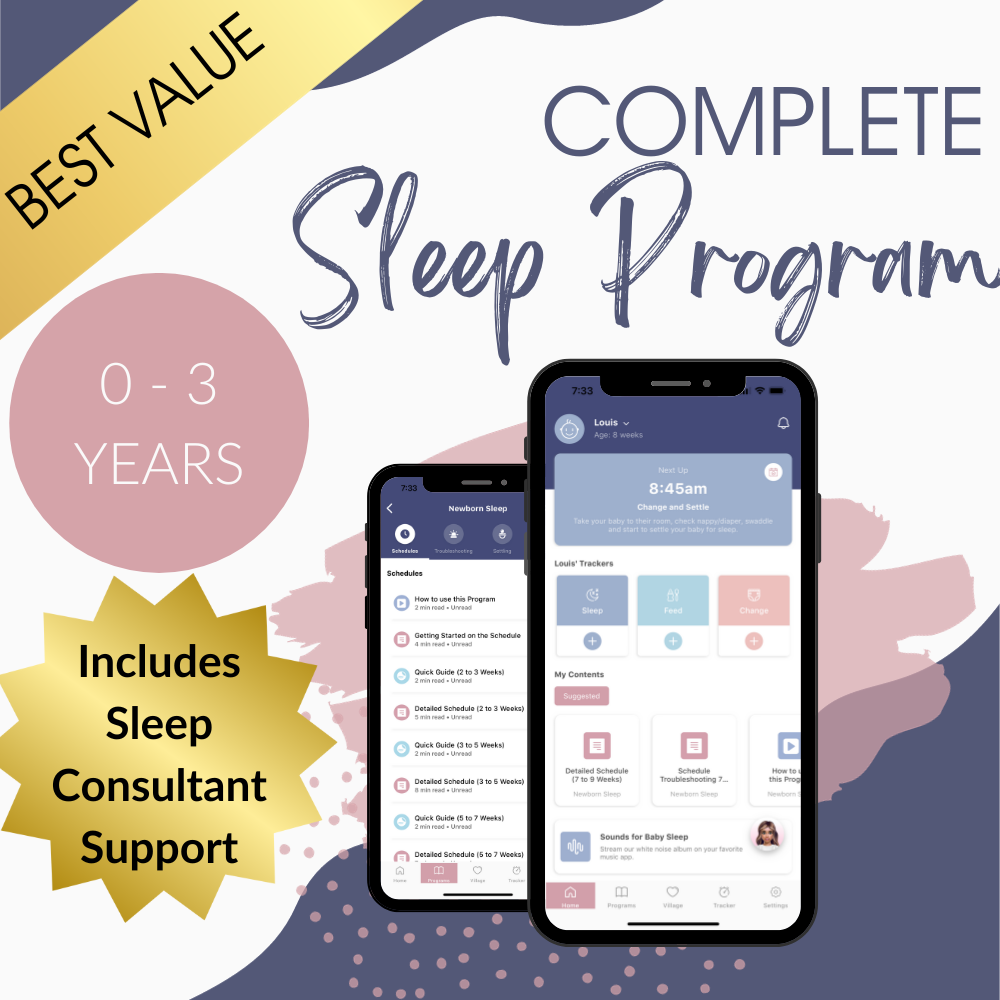
Threenagers and sleep
In this article:
- Intro
- Naps...does my toddler need a nap?
- Quiet time
- Bedtime battles
- Waking overnight
- Tips and Tricks
- Further Reading
You made it through the first few years of night wakes and sleep deprivation with your baby.
Your little one isn’t quite so little anymore. Now you have a three year old...when did that happen?
Sleep should be plain sailing now right? Not always.
Forget the willingful one year olds and the terrible twos. Now you’re entering the threenager stage.
What is a threenager? I hear you ask.
A threenager is a three year old who has the attitude of a teenager! And boy don’t we know it!
In this article we will explore the common sleep problems that can occur during this year of your preschooler’s life as their sleep patterns change and how we can improve their sleep.
E-Book: Navigating the Preschool Years: Sleep, Behavior & Development for 3 to 6 Year Olds
There is a LOT of growth and development that happens between the ages of 3 and 6 years and your child becomes a pretty amazing, pretty independent little human. There can also, however, be a raft of challenges that accompany these changes (and I know I don't have to tell you that!).
In our comprehensive e-book we'll guide you through your little one's sleep, behaviour and development across these crucial years.
Buy Now
Does my toddler need a nap?
Between 2.5 to 3 years old toddlers will drop their last nap (the long lunch nap.) This transition can be tough and boy, it can seem like a long day with a child who is adjusting to being awake for the whole day.
When your preschooler is extra cranky it can be tempting to pop them to bed for a quick nap so you can have some peace and quiet. However, come bedtime you often end up paying for that nap, as your preschooler is still full of beans and won’t settle to sleep.
Children who are still napping every day at 3 years old will often have trouble settling to sleep at bedtime, wake more overnight or wake early to start the day.
If your preschooler is still napping consistently each day and it is affecting their overnight sleep then look to cut the daytime nap out gradually. This should improve your child's sleep overnight .
However, if your preschooler is having the odd nap on particularly busy days or falls asleep in the car occasionally don’t worry. It’s perfectly normal for them to still need a little extra sleep sometimes. A power nap can do them the world of good.
Some three year olds will still be napping in the day and sleeping fine overnight, if this is you then enjoy it.
Quiet time
So your preschooler is no longer napping in the day...now what? Apart from drying your eyes from tears, this is the time to introduce a ‘quiet time’.
It makes for a very LONG day once the lunch nap is dropped. We recommend you have a ‘quiet time’ instead during the time where their lunch nap would have been. This is when we have a natural energy dip during the day.
This gives you both some down time and a chance to recharge for the afternoon. Ideally quiet time would happen in your child’s room as long as you know that it is a safe environment for them.
Quiet time activities might include:
- Reading or looking at books
- Drawing or colouring
- Listening to an audio book
- Listening to music
- Building blocks or jigsaw puzzles
- Mindfulness or meditation
Try to stick to activities that are quiet in nature and don’t require much physical or mental exertion. Also stick to ones that are manageable for children to complete by themselves with limited mess opportunities!
As your child gets older, quiet time can be done independently. When you first introduce quiet time it is important for you to be there to model what quiet time entails. Your child will learn from you what is expected of them during this time.
When you first leave your preschooler to do quiet time independently it can be worth setting a timer or alarm if you have a training clock or a smart speaker. This way your child knows when quiet time is over and they can come and find you. Start just leaving them for short periods of time and gradually build the length of quiet time up. This also teaches your preschooler how to play independently which is a great skill for them to learn.
Say goodbye to sleepless nights.
Join over 300,000 families worldwide who are enjoying excellent sleep with our Sleep Programs, created by experts in the field of pediatric sleep.
Buy Now
Of course you can pop in and check on them and if you’ve risked leaving your child with felt tip pens or crayons I’d definitely recommend you check on them...and your walls for new artwork.
Give them huge amounts of praise when they have completed their quiet time. I liked to have a snack and a drink ready for my preschooler once quiet time was over. I also used the time to set up a quick game, puzzle or activity for us to do together after he had finished his snack.
Bedtime Battles
You’ve had your bedtime routine set for months, maybe even years but for some reason bedtime is taking longer and longer now you have a three year old.
That is because your preschooler is a lot more clued up now. They have learnt that they can have some control over bedtime...cue the bedtime battles.
Bedtime can quickly become a game for your three year old. You will soon realise that after:
- One request for a snack
- Two extra trips to the toilet
- Three drinks
- Four bedtime stories
- Five nursery rhymes
- And countless kisses and cuddles
Decide what your level of tolerance is around bedtime shenanigans. Once you know where you draw the line then you can put some strategies in place to help your preschooler to learn the boundaries and what your expectations are around bedtime.
Children learn best through play so help them “play” with bedtime during the day. Role-play with their toys where they put the toys to bed calmly and gently. Then you role-play one of the toys getting out of bed. Demonstrate what will happen so your preschooler knows what to expect, for example you may silently return the toy to bed or you may return the toy to bed and say you’ll come and check on them.
Three year olds don’t have a great concept of time so if you’re checking on them then make this short, just a minute when you’re role playing. If you’re using the check method at bedtime with your toddler then wait a couple of minutes then go in to check and gradually build the time up in between checks until they fall asleep.
Waking overnight
Although there isn’t a sleep regression at three years, there are plenty of reasons why your three year old may still be waking overnight.
Let’s explore some common sleep problems and the solutions.
Fear of the dark
Around 2 years old their imagination develops enough that they can start to be scared of the dark. By 3 years old their imagination is fully developed. They may start playing more imaginatively and enjoy role-playing, however that sense of fear also creeps in.
The easiest way to tackle this is to introduce a night light or a special new toy or cuddly to “look after” your little one during the night. Some children like to have the door left open a little at this stage too.
Needing things
It’s 3am and your preschooler decides they NEED a drink of water. What do you do? You don’t want to encourage this and end up with a habit where you fetch them some water in the middle of night. But equally they may be genuinely thirsty.
As adults we sometimes wake in the night and need a quick sip of water, children are the same.
I’d recommend putting a non-spill drink’s bottle with water in your child’s room where it is easily accessible while in bed so they can help themselves to a quick drink during the night if they need it.
Toilet training
If your child has recently been toilet trained then it can be quite common for them to suddenly wake during the night, even if they are still wearing nappies at night. This can be due to their body causing them to wake, telling them that they need the toilet. Take them to the toilet as part of your bedtime routine and first thing in the morning.
Let's get your little one's sleep sorted ASAP!Our award-winning Sleep Programs will solve your baby's sleep challenges in no time. Take advantage of our new low prices while they last!
Buy Now
Keep in mind that if your child is night toilet training then you may want to limit the amount of liquid they’re having otherwise you might end up changing bedsheets in the night instead of offering a drink!
Nightmares
Nightmares are tied in with a fear of the dark. Children’s imaginations have developed enough now that their brain’s can run away with themselves while they sleep and this can lead to nightmares.
Between the ages of 3 to 6 years nightmares are most common, as children get older they do tend to grow out of them or the frequency of nightmares decreases.
Here’s some tips to help limit or improve nightmares:
- Try to ensure your preschooler is watching age appropriate programmes
- Discuss anything with them that they watch or encounter and show fear over
- Explore fears in healthy ways such as encouraging your child to watch you remove a spider from their room
- Limit or have no screen time from 5pm onwards as it can impact their settling at bedtime and their overnight sleep
- Have a consistent and relaxing bedtime
If your child is having frequent nightmares and it is affecting their sleep then do seek support from your medical professional.
Top Tips for Toddler Sleep
Here are some top tips for ensuring you and your preschooler develop good sleep habits to get a good night’s sleep.
- A consistent bedtime routine. For our family that means; bath, pyjamas, two books, brushing teeth, two songs and saying goodnight.
- Stick to your guns. Decide what your routine and expectations are and stick to it because trust me they will test those boundaries a thousand times over.
- Limit screen time before bed. Blue light omitted from devices inhibits melatonin production meaning it can be harder for children to switch off. I know if I’ve been scrolling on my phone late at night I find it harder to switch off too.
- Drop the lunch nap when they’re showing signs that they need to. This might look like trouble settling at bedtime, waking in the night or waking early in the morning to start the day.
- Quiet time is your friend! Once the lunch nap is dropped, replace it with quiet time. Invest your time and energy into teaching your preschooler how to do this and you will reap the benefits of it.
-------------
Further Reading
https://www.rcpch.ac.uk/resources/health-impacts-screen-time-guide-clinicians-parents





